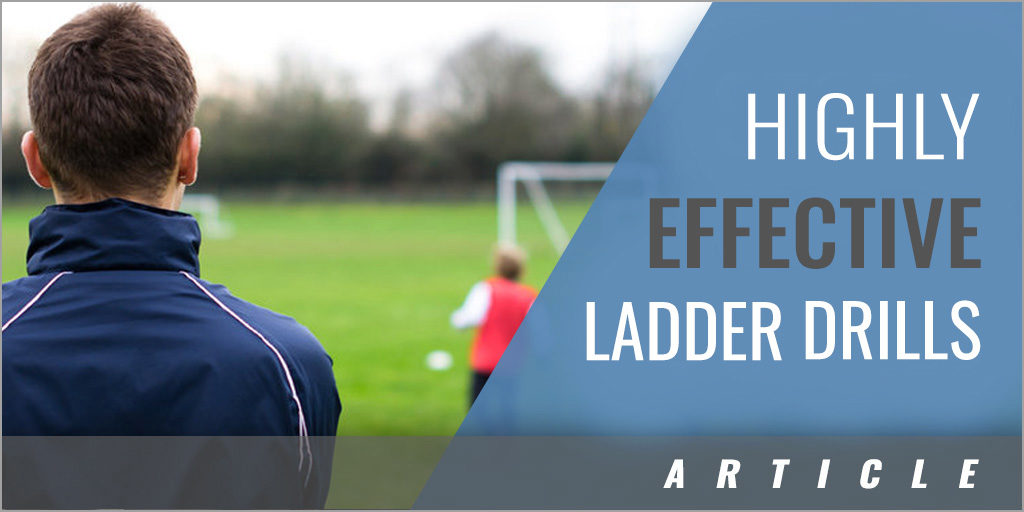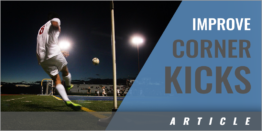|
Originally Published in: Projectsportsmastery Provided by: Amplified Soccer The following is a guest post from projectsportsmastery. Different people excel in different sports and the ones that are not able to perform at any sport have not been guided properly. We at Projectsportsmastery are here at your disposal to provide you with the best of services that you would not find anywhere else. Find out more about Projectsportsmastery. Agility ladder drills for soccer are designed to improve a player's balance, quickness, and coordination. The exercises are effective in improving the player's movements which is beneficial on the field. As a result, the performance of a soccer player is highly enhanced when playing against the opposing team. What you ought to know is that speed training drills for football are actually fun and challenging too. Not only can soccer players perform the ladder drills at low intensity as warm-up exercises but they can engage in the exercises at a high intensity too. During training, players are required to make light and quick steps. While ladder drills are beneficial to the performance of soccer players, there are moves which are rarely used. Want to learn more about these moves? Well, here is an in-depth look at the rarely used agility ladder drills. Ickey Shuffle It is important to know that footwork is a critical component that helps to improve the player's agility. Ickey shuffle is one of the agility ladder drills for soccer that most players rarely use when training. This drill is quite simple to perform. For starters, the players will begin by facing down the ladder and to the side. To ensure that the drill is completed as required, the player must adopt a sound rhythm. What most trainers recommend is a 1-2-3 rhythm. The first move should involve the stepping into the first square of the ladder using the inside foot. This should be followed by the outside foot. As the player proceeds towards the second square, he or she should start with the lead foot. This means stepping outside the ladder using the lead foot before stepping into the second square. Once the player steps into the second square using the lead foot, they should follow this with the trail foot. From here onwards, the player can simply repeat the moves above until the end of the ladder. Once he or she is done, one can decide to complete the above moves again but in a backward motion. In Out Out If you are familiar with the in-out ladder drill, then this move should not be difficult for you. The move is quite simple to complete. The first step is the player's position. The player must stand at the start of the ladder but face it from the side. Due to the player's position, the ladder will be parallel to the player's body. Starting with the left foot, step into the first square. Make sure that the right foot is still at the original position. Step outside of the first square so that the left foot joins the right foot. Move the right foot outside of the second square followed by the left foot. By now you should be positioned beside the second square. In the second square, you will perform opposite of what you did at the first square. This means stepping into the second square using the right foot and not the left foot. The left foot will be stationary and outside the second square. From here onwards, repeat the moves as you interchange the squares. X-Over Lateral The X-Over lateral move is also similar to the sidestepping drill. The difference is the position of the player's body and feet. For starters, the player is supposed to face sideways. The feet should be slightly distant that is the left foot should be slightly ahead of the right foot. In this drill, the player will interchange the feet as they move from one square to another. The first move should be made with your left foot. Step into the first square using your left foot followed by the right foot which should be positioned just behind the left foot. In the second square, the player should start with the left foot followed by the right foot. While making all these moves the player should ensure that the left foot is slightly ahead of the right foot. Remember to ensure that your rhythm is a little faster to avoid getting fatigued easily. Repeat the above moves until the last square. You can decide to make the speed training drill for football more challenging by starting from the other end towards your original position. Hopscotch Ladder Drill Hopscotch ladder drill is much similar to the hopscotch game. The only difference is that this drill requires more moves than the game. With the ladder positioned in front of the player, start by standing outside the first square. Move the right foot and step into the first square. This should be followed by the left foot. Without resting, move the right foot outside the second square followed by the left foot to the other side. At this position, the second square should be between your feet. Move the right foot by stepping into the third square followed by the left foot. With both feet in the third square, you can simply repeat the previous moves. If you have a cone positioned a little further away from the ladder's end, the player can race to the cone and back. To ensure improved speed and agility, the player is supposed to perform 6 to 10 repetitions. One Footed Hop As a soccer player, it is important to understand that coaches rely more on players who are agile and quick with their footwork. The reason for this is that the players are able to dribble the ball past the opponents finally scoring or passing the ball to a teammate. To ensure that you are fast and well balanced, you need to incorporate the one footed hop. Standing with both feet at the start of the ladder, hop into the first square with the right foot. The left foot should be bent at the knee so that it's suspended above the ground. From here, the player should hop into the second square using the right foot. To proceed ahead, the player should hop sideways out of the second square. This will position the player beside the second square. Continue by hopping into the third square while the left foot is still bent at the knee. Instead of jumping outside of the third square towards the right side, the player should jump towards the left. This will position the player outside the third square. Repeat the moves above for improved balance. Final Thoughts As a coach, it is important to incorporate more agility ladder drills for soccer during training. The drills are very important to the player. Not only do they help to ensure that players are in good standing with the coach but they help to improve the players agility, speed and footwork. Remember, consistency is key when training. |






